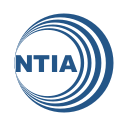The National Telecommunications and Information Administration is gearing up to administer federal broadband funding on a larger scale than ever before, and it seems clear already that there is intense hunger for that resource: The agency said that it has received funding requests worth $2.5 billion for a current program that only has $288 million in grants to offer.
NTIA says it has now officially established the Office of Internet Connectivity and Growth (OICG) and within it, the Office of Minority Broadband Initiatives (OMBI). OICG had to be established per Congressional mandate and it will be the central coordinating point for all broadband-related activities at NTIA, including its Broadband USA outreach, technical support and mapping effort, and its three active broadband grant programs: The Broadband Infrastructure Program, the Tribal Broadband Connectivity Program and the Connecting Minority Communities Pilot Program.
OMBI, meanwhile, also was enacted according to the Consolidated Appropriations Act of 2021 and will lead NTIA’s efforts to collaborate with federal, state, local and tribal governments and anchor institutions such as Historically Black Colleges and Universities (HBCUs) and Tribal Colleges and Universities to expand digital opportunities and inclusion for unserved or underserved demographics.
“With this new organizational structure, we are prepared to make significant progress in closing the digital divide through our broadband programs, bringing us closer to President Biden’s goal of connecting all Americans to reliable, affordable high-speed Internet,” said Acting NTIA Administrator Evelyn Remaley.
Meanwhile, NTIA said that it has received more than 230 applications for funding through the Broadband Infrastructure Program from 49 states and U.S. territories, totaling more than $2.5 billion — though the program currently has only $288 million, funded through this year’s appropriations legislation. NTIA said that because of the high volume of applications, the awards will be “highly competitive.”
As per the terms outlined by Congress, priority will be given to proposed projects that are most cost-effective in providing broadband service of at least 100/20 Mbps to the greatest number of households in an eligible service area, and/or provide broadband to rural areas. The applications will go through a three-stage review process.
In its release about the funding request, NTIA pointed out that its $288 million isn’t the only broadband funding well that states and other entities can draw from: There is still part of $350 billion in funding from the American Rescue Plan flowing from the Department of the Treasury, and there are a number of other federal programs — and while it’s far from a done deal, the Senate recently passed a $1 trillion infrastructure package that included $65 billion for various broadband programs that indicates continued bipartisan support for broadband. (NTIA’s BroadbandUSA has an online federal funding guide that was updated in mid-July, available as a pdf here.)
“The intense demand for this program across the country demonstrates the widespread need for better broadband connectivity in unserved communities,” said U.S. Secretary of Commerce Gina Raimondo. “These investments are critical, but there is more to be done. The bipartisan Infrastructure Investment and Jobs Act, recently passed by the Senate, will expand upon the groundwork being laid by this program to advance digital equity and get us one step closer to every American having access to high-speed, affordable, and reliable Internet.”

